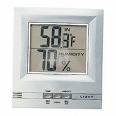Writes reader Greg Severson:
 I have a question regarding decanting wine. Even though decanting is beneficial (even necessary for some wines), do you have any suggestions on how to keep the wine from getting too warm while it is decanting. I’m able to keep our wine temperature controlled, so letting the wine sit for 30 minutes before serving, and getting towards room temperature after keeping it stored correctly, seems to counter the airing of the wine.
I have a question regarding decanting wine. Even though decanting is beneficial (even necessary for some wines), do you have any suggestions on how to keep the wine from getting too warm while it is decanting. I’m able to keep our wine temperature controlled, so letting the wine sit for 30 minutes before serving, and getting towards room temperature after keeping it stored correctly, seems to counter the airing of the wine.
We like the wine at the correct temperature, so that’s the reason I usually don’t decant, though I know I should.
Any ideas?
Dear Greg:
There is an important difference between cellar temperature and serving temperature. You probably keep your temperature-controlled unit at or near 56 degrees. That would be an excellent temp for ageing your wines.
It is slightly too cold, however, for serving most red wines. Decanting and airing a red wine for 30 minutes or so should slowly bring the temperature closer to 66 degrees, which would be ideal for Pinot Noir or older, more delicate reds. You can let your big reds such as Cabernet Sauvignon, Merlot and Syrah warm up another couple of degrees.
The reason the storage temp is much lower is too prevent premature ageing and oxidation. But once you’ve decided to pull the cork and serve, a few minutes under warmer conditions will not harm your wine. In fact, it will develop a much more expressive bouquet as it warms.
Writes reader Patricia Campbell:
I read your item on the Drouhin family. I am going to be in Burgundy in April and, in honor of my favorite wine, I plan to eat at the Montrachet restaurant in Puligny-Montrachet. However, I am a little worried that I might inadvertently order a bottle of Puligny-Montrachet that has been ‘Americanized’ (or ‘Robert Parkered’ as I call it). Can I assume from the column on the Drouhins that, if I order one of theirs, it will be in the classic (non-oaky) tradition?
Dear Pat:
Virtually all Puligny-Montrachet is fermented and aged in oak barrels, but the presence of wood is hardly due to either American influence or the influence of wine critic Robert Parker. This is the traditional method of vinification in the region.
Your perception that traditional Puligny-Montrachet is not overtly oaky like many American wines is most likely due to the aroma profile, which is more distinctly at the mineral aspect of the spectrum than more fruity New World Chardonnays.
 The Drouhins produce an exceptional Puligny-Montrachet from the premier cru vineyard ‘Folatieres.’ This wine retails in the U.S. for about $60. I tasted the 2004 Folatieres during my Drouhin visit and was impressed with the wine overall, finding it to be flinty on the nose, largely driven by an intense minerality, a hint of smoke and a very light honey essence. The Folatieres also offered generous notes of pear and baked apple, with a tight, clean citrus finish.
The Drouhins produce an exceptional Puligny-Montrachet from the premier cru vineyard ‘Folatieres.’ This wine retails in the U.S. for about $60. I tasted the 2004 Folatieres during my Drouhin visit and was impressed with the wine overall, finding it to be flinty on the nose, largely driven by an intense minerality, a hint of smoke and a very light honey essence. The Folatieres also offered generous notes of pear and baked apple, with a tight, clean citrus finish.
I rated the wine 93 points.
8
